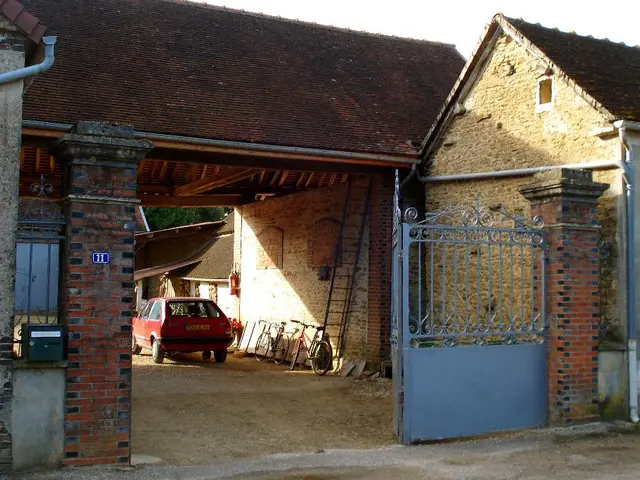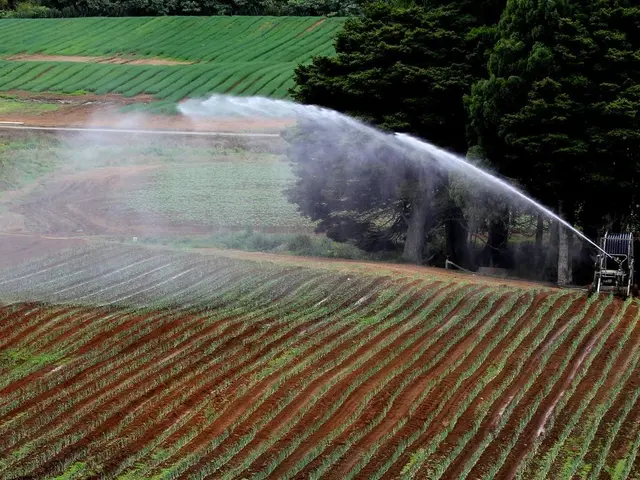Turning City Voids into Vibrant Urban Farms: A Chat with The Foodprint Lab! Or team up with other urban farming enthusiasts via the platform Grow Here. This company, known for bridging the gap between urban agriculture and cities, is making cities greener and healthier, one project at a time. Here's a conversation with none other but its co-founder...
Transforming City Farms: A Look at Foodprint Lab's Approach
The Foodprint Lab is "Sweden's leading architectural firm focusing on Sustainable Food System Design." We chatted with Jonathan Naraine, one of the founders, about their endeavours, goals, and the impact they've made so far in numerous communities, landlords, and cities.
What's The Foodprint Lab All About?
"We are a group of architects and planners on a mission to foster more local, resilient, regenerative food systems."
The Foodprint Lab sheds light on the origins of our food. It promotes direct connections with local farmers and provides the means to co-create a personalized local food system through food sovereignty. In essence, The Foodprint Lab connects local farmers with volunteers, assists landlords in transforming vacant urban lands into thriving urban farms, gardens, or parks, and spreads awareness about the importance of locally-grown food. "Having control over our local food system is a significant aspect of our ambitions from the beginning," says Jonathan.
"We adopt the term 'food system designers' to describe our work. It signifies that we are designing food systems," but this isn't solely about shaping global food systems – it's more about bringing people together through food.
"It's a collaborative journey where we believe that anyone who eats food can potentially impact the food system and collaborate in its creation – architects and planners may play a leading role in acknowledging their potential influence and crafting food systems alongside the local residents."
Diverse paths led team members to The Foodprint Lab; for Jonathan, it was the fascination with food and sustainability issues related to food. His fellow team members, Christina Ramos Cáceres and Victoria Bengtsson, were captivated by climate adaptation, managing city resources, and of course, how these ideas tie in with urban farming and local food production.
"We started with food and farming as a means to address many of the sustainability challenges we face, particularly ecological issues like climate and biodiversity, but also because local and urban farming can help address social challenges, as well," explains Jonathan, echoing the team's goal upon officially establishing The Foodprint Lab in 2016.
Work and Projects
The team has assembled several projects through designing and co-creating various urban farms, pop-up parks, and similar projects. The success of their work led them to devise another meaningful project in 2016, in collaboration with the City of Gothenburg: Grow Here.
Grow Here is a platform for linking farmland owners with individuals interested in farming or gardening. It offers a platform for landowners to share their land, while providing opportunities for those with a green thumb to find land and farmers to team up with. Initially named Grow Gothenburg, it went live locally in 2017, but in 2020 it expanded into an international platform, shedding its old name and is now a valuable resource for farming and gardening communities worldwide. In essence, it's similar to Community Gardens Australia, but with one key difference – it maps not just existing community gardens, but a variety of urban and rural farms, and shares any potential farmland.
"Setting lofty aspirations is a fantastic way to motivate and bring about significant change, because I think these kinds of things need to scale up more rapidly to tackle some of the major obstacles we're up against," comments Jonathan.
From Idea to Reality: Urban Farming in Action
What does the process of breathing life into previously barren spaces look like?
Once a client reaches out to The Foodprint Lab, the team invests time in understanding the needs of the community they'll work with.
Following this is a site study, which involves the evaluation of suitable farming methods for the land, assessing weather conditions, analyzing social aspects of the site, and determining accessibility. This research provides a better understanding of the residents' objectives for the future of that particular land.
Next is a collective design process—engaging residents in the design and development of The Foodprint Lab's projects. This is accomplished through various workshops. "When it comes to urban farming, it's even more essential to involve residents who will work the land," says Jonathan, noting that the website Grow Here is a fantastic tool for connecting with those individuals.
In many instances, their team has worked simultaneously as consultants and headhunters for individuals who will farm on the land. "The goal is to know that you have a dedicated team that can maintain the farm." It's crucial to The Foodprint Lab to engage "future farmers in the early stages" of the project to prevent landowners, municipalities, and other stakeholders from investing in unattended land after the project's completion.
Growth and Learning
When asked about their triumphs, Jonathan points to The Foodprint Lab itself as a high point. "We've created a fresh model that's been barely tested before, in terms of establishing partnerships with property owners, both in the public and private sectors," he says. He goes on to describe the positive feedback they've received from people who genuinely value their work.
"As a platform for connecting property owners with potential farmers, we enable our clients to get closer to their dream of creating a lush, communal space while growing their own food," Jonathan says, highlighting the long-term maintenance solution they provide to ensure the farms are sustainable and aligned with the needs of the landowners.
Spreading the Word: A Catalyst for Change
"This concept of localizing food production in a community can be applied to both urban and rural communities," points out Jonathan. It embodies regenerative agriculture, enlivening both communities and soils by fostering healthy ecosystems and simultaneously focusing on the well-being of people. "Farming should not be at the bottom of the list when considering potential land uses," he stresses, expressing concern about the removal of farms, gardens, or green spaces to make way for buildings. This approach undermines the significance of increasing urban green spaces to make cities more resilient.
Advice for Our Readers
Start small. Start where you are, and have the courage to simply take action.
For Jonathan and his team, The Foodprint Lab was a challenge – and it still is. They acknowledged a year to try and test it out; if it didn't work, they would move on. However, over the past seven years, opportunities have arisen, and though "it's still an uphill battle working in an uncharted territory," the team recognizes the importance of their work. "You get so much meaningful feedback from people that truly value your efforts, which makes it all worthwhile," Jonathan says.
However, it's essential for an entrepreneur to remain realistic: understand your clients. "That's where we started, and without it, we would have just been dreamers trying to change the world, but not having the ability to sell anything," advises Jonathan. Find out who you're working with and how you can sustain your business while making a positive impact in the community.
The Foodprint Lab: A Catalyst for Change
For anyone with a desire to transform their unused land and create something meaningful, green, and beneficial to the community, The Foodprint Lab is a company to look to. They advise, design, collaborate, and execute urban farms, pop-up parks, gardens, and more. Through revitalizing plots, they create community gathering spots, while offering space for healthy food production, raising awareness of the importance of urban greenery, and improving the overall feel of the municipality.
"We're inviting other consultants to become local facilitators for local farming, just like we are. By using the Grow Here platform, they can spread the land-sharing model in their local city or region," adds Jonathan, wrapping up the conversation. If you want to turn your unused plot into an urban farm, or want to implement more green spaces in your city, you can get in touch with The Foodprint Lab and the Grow Here team via this link.
The Foodprint Lab, a leading architectural firm focusing on Sustainable Food System Design, sheds light on the importance of locally-grown food and promotes collaboration to establish personalized local food systems. They "believe that anyone who eats food can potentially impact the food system" and work towards fostering more local, resilient, and regenerative food systems.
While their primary focus is on food-and-drink, they also delve into home-and-garden projects through initiatives like Grow Here, a platform for linking farmers with landowners to create green urban farms, gardens, or parks. By engaging residents in their design and development processes, The Foodprint Lab is not just about designing food systems, but also inspiring education-and-self-development by empowering local communities to take action and make a positive impact in their cities.








